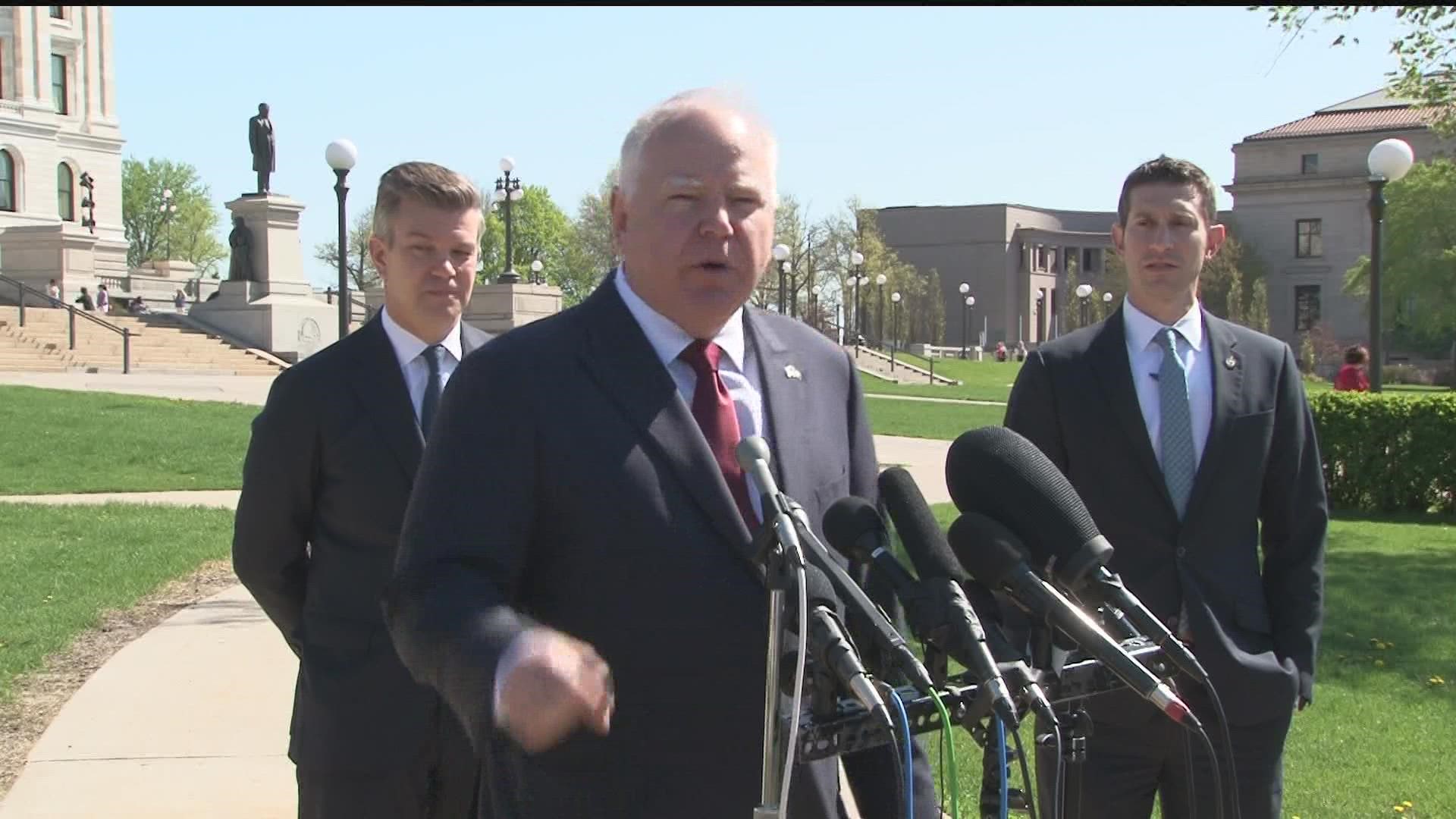ST PAUL, Minn. — While far from a finished product, Governor Tim Walz is touting what he calls a "broad framework" agreed to by negotiators that could lead to a multi-billion dollar spending plan by the time the legislative session wraps up.
Walz says he, Senate Majority Leader Jeremy Miller and House Speaker Melissa Hortman are jointly releasing details of the agreement, which includes a $4 billion investment in education, public safety and healthcare for Minnesotans, and another $4 billion that will provide relief to Minnesotans via a tax bill.
The administration and lawmakers have been discussing what to do with the state's projected $9.25 billion surplus since it was announced in late February.
“With an unprecedented surplus, we have the ability to make significant investments in the things that will improve Minnesotans’ lives, like health care, public safety, and education, while also providing tax cuts and putting money in Minnesotans’ pockets,” Governor Walz said in a released statement.
"Getting money back to the people has been a top priority for Republicans this session and I'm very happy we were able to accomplish this with permanent ongoing tax relief for hardworking Minnesotans, families, and seniors,” said Senate Majority Leader Miller in explaining his party's priorities. “In addition to giving money back, this bipartisan agreement delivers targeted investments in public safety, education, nursing homes, and core infrastructure projects. Finally, leaving money on the bottom line is the fiscally responsible thing to do, especially as the economy appears to be slowing down.”
The basic framework of the agreement includes:
- $1 billion for education
- $1 billion for health care and human services
- $450 million for public safety,
- $1.5 billion in additional investments
- $1.4 billion in capital investment projects
- $4 billion will be put toward a tax bill
- $4 billion kept in state coffers to help the state manage future economic uncertainty
While Monday's announcement is a sign that progress is being made during what has been a bitterly divided session, all those seated at the negotiating table know that nothing is for certain until the votes are tallied and the bills signed.
"This is a positive step forward, but there is a lot more work ahead of us in this final week of the legislative session,” cautioned Speaker Hortman.
Watch more Minnesota politics:
Watch the latest political coverage from the Land of 10,000 Lakes in our YouTube playlist:

